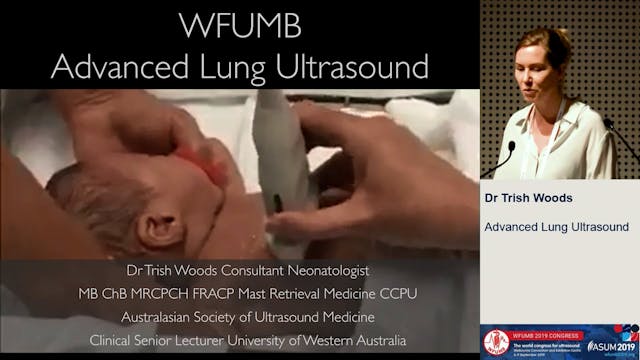Can LUS in the DR predict respiratory support?
NEONATAL & PAEDIATRICS
•
20m
Lung ultrasound has shown promise as a powerful diagnostic tool in newborns. During birth, the infant must transition from a fluid filled lung that depends on the placenta for oxygenation and the elimination of carbon dioxide to an aerated lung that successfully exchanges gases. Ultrasound examination of the lung depends on attenuation of sound waves and interpretation of characteristic artefacts. Ultrasound beams penetrating an unaerated, fluid filled lung create true ultrasound images as the density of fluid changes between the pleural line and the lung parenchyma. Traditionally, the interference of sound waves caused by air in the lungs has discouraged the use of lung ultrasound as a diagnostic tool. However, ultrasound beams passing through an aerated lung will produce characteristic artefacts because of the acoustic impedance of air, tissue, and fluid in close proximity. These characteristic artefacts can be interpreted for diagnostic purposes.
We believe that lung ultrasond in the minutes after birth may be able to accurately predict which extremely preterm infant will successfully be managed by non-invasive ventilation and which infant will need surfactant and/or intubution. Also, we believe that lung ultrasound may be able to monitor the progress of lung liquid clearance and provide information regarding the success of the surfactant treatment and the success or timing of extubation to non-invasive ventilation in this population. LUS may be able to predict other post extubation changes that can cause failure of non-invasive support, like an increase in post extubation oxygen requirement. Therefore, we also plan to investigate the utility of lung ultrasound to demonstrate changes after surfactant delivery and to predict readiness for extubation.
Up Next in NEONATAL & PAEDIATRICS
-
Lung ultrasound advanced
Overview of the real utility of lung ultrasound in neonatology across the spectrum of respiratory pathology encountered. The value of a starting with a focused clinical question in the functional application in various disease states, from acute respiratory distress to bronchopulmonary dysplasia ...
-
BUCKLED: ultrasound in kids with dist...
Forearm fractures in children are a common presentation to the Emergency Department. Paediatric distal forearm fractures account for almost a third of all fractures in children, with a significant proportion of these diagnosed as buckle (torus) type fractures. These fractures are unique to childr...
-
Point of care functional cardiac scan...
Patients in the neonatal intensive care often demonstrate clinical situations where hemodynamic compromise is common. Birth itself is the complex transition from placental blood flow to pulmonary blood flow as predominant provider of preload to the left heart, with redirection of blood flow over ...



